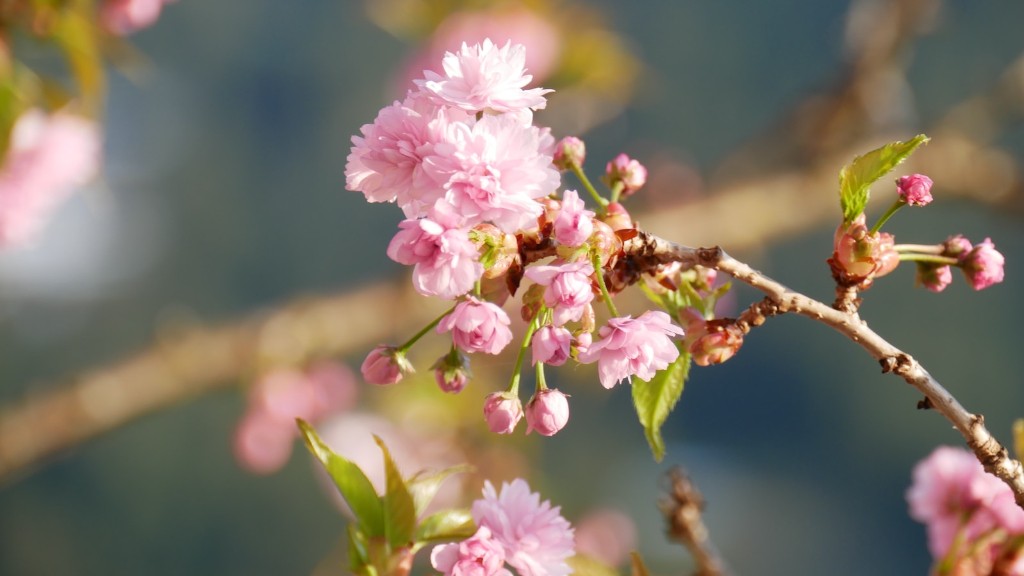Cherry trees are a popular choice for home gardeners and orchard owners. They are known for their fragrant and flavorful fruits, vigorous growth and attractive foliage. The key to growing a healthy cherry tree is to start with high-quality seeds that have been stored properly. Cherry seeds are notoriously difficult to germinate, so it’s important to know how to properly plant them for successful germination.
The first step to planting your cherry tree seeds is to soak them overnight in warm, pure water. This will help awaken the dormant seed from its winter dormancy, allowing it to start sprouting. Once the seeds have soaked for 12 hours, put them each in a biodegradable container, such as a paper cup, with a few drops of water. Place the containers in a warm environment and mist them daily with warm water.
Once you see signs of the cherry seedlings emerging, you can prepare the soil for the transplant. Use a well-draining, sandy soil that is rich in organic matter. Work it down around 4 to 6 inches deep in a location that receives at least 6 hours of sunlight every day. To ensure that the soil remains loose and well-aerated, add a layer of compost and aged manure to the soil beforehand.
When the seedlings are 6 inches tall, it’s time to begin the transplant process.
Gently lift the seedlings out of the container using a small trowel or spoon, and transplant them into the prepared soil. Make sure to plant the seedlings at least 8 inches apart and water them thoroughly after the transplant. This will help decrease the stress that the seedlings may be feeling.
Now your seedlings will need plenty of water and fertilization to help them develop into healthy cherry trees. For the first year, water them every couple of days during hot, dry weather and fertilize them twice a month with a balanced fertilizer. This will help encourage strong and healthy root systems, which will make you cherry tree more resilient and better able to fend off disease.
Once your trees have been transplanted and are established, pruning will become essential to helping it grow and mature. Pruning should be done in early spring when the leaves emerge, and it should be done carefully to ensure that the tree doesn’t become unbalanced. When pruning, make sure to remove diseased, damaged and dead wood, as well as any crossing branches or branches that are growing inside the tree.
Finally, the cherry trees need to be grafted in order to produce fruits. Grafting is a process in which a shoot from one type of tree is inserted into a different tree. This gives the different trees the same root system and allows them to take on the characteristics of each other. A cherry tree is grafted on to a grafting rootstock, which is another type of cherry tree. The grafting process must be done correctly for the tree to be successful and produce fruit.
Periodic Maintenance
Periodic maintenance is essential in order to keep your cherry trees healthy. In the springtime, it is important to give the tree a deep watering with a slow trickle and fertilize it vigorously with an organic fertilizer. Mulching around the tree and checking for pests are also important steps to keeping your tree healthy. Over the course of the year, you will want to prune branches that are growing too low, remove dead wood, and reduce the fruit production slightly if it is too much.
It is also important to protect the cherry tree from the elements. Over winter, the tree should be protected with a burlap wrap to keep away freezing temperatures. In the summertime, you should make sure to water the tree regularly. During rainy weather, you should make sure that the tree is not over-soaked, as this can cause root rot.
Harvest And Storage
Once your cherry tree is producing fruit, you will be able to start harvesting the cherries. When harvesting cherries, you should use a sharp knife to snip the stems, as pulling the cherries off their stems can leave bruises on the fruit, leading to rot. When harvesting, make sure to only pick cherries that are a deep, red color and are fully ripe. Harvesting cherries early will reduce their sugar content.
Once the cherries have been harvested, they should be stored in a cool, dry place. Make sure that the cherries don’t come into contact with any moisture, as this will cause them to rot. Stored properly, cherries can last for up to 2 weeks.
Pest Treatment
Cherry trees are vulnerable to pests, diseases, and other issues, so it is important to be vigilant when it comes to monitoring your tree. Many pests, such as aphids and caterpillars, can be treated with organic and natural techniques, such as introducing beneficial insects to the tree, spraying it with water and detergent, or making a garlic spray. If a cherry tree is infested with pests, just pick off the affected leaves, fruits, and stems to reduce the pest population.
Some diseases, such as powdery mildew, can also affect cherry trees. To help prevent this, it is important to provide your tree with the right amount of water, sunlight and air circulation. If your tree is affected with powdery mildew, you can use a fungicide to treat it, but you should make sure that the fungicide is organic and safe for your tree.
Tools And Supplies
To help ensure success in growing cherry trees from seeds, you will need various tools and supplies. You will need biodegradable containers for the germination process, a trowel or spoon for transplanting, an organic fertilizer for nourishment, and a sharp knife for harvesting. Other items like horticultural cloth for protection against pests, burlap for protecting against winter temperatures, and a spray bottle for misting the seedlings are also important.
With the right tools and supplies, and a bit of patience, you can successfully plant your cherry tree seeds. After following these simple steps, you will be able to watch your cherry tree grow into a vibrant and productive blooming cherry tree in no time.



